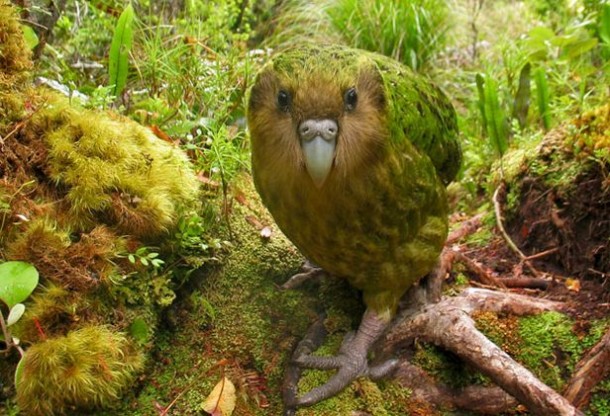
The kakapo
The kakapo (Strigops habroptilus) is a large flightless parrot native to New Zealand. It adapted to life on the ground because New Zealand has few natural terrestrial predators. They are accomplished climbers, using their wings for balance, and their beak and strong claws to pull and grip their way up and down trees.
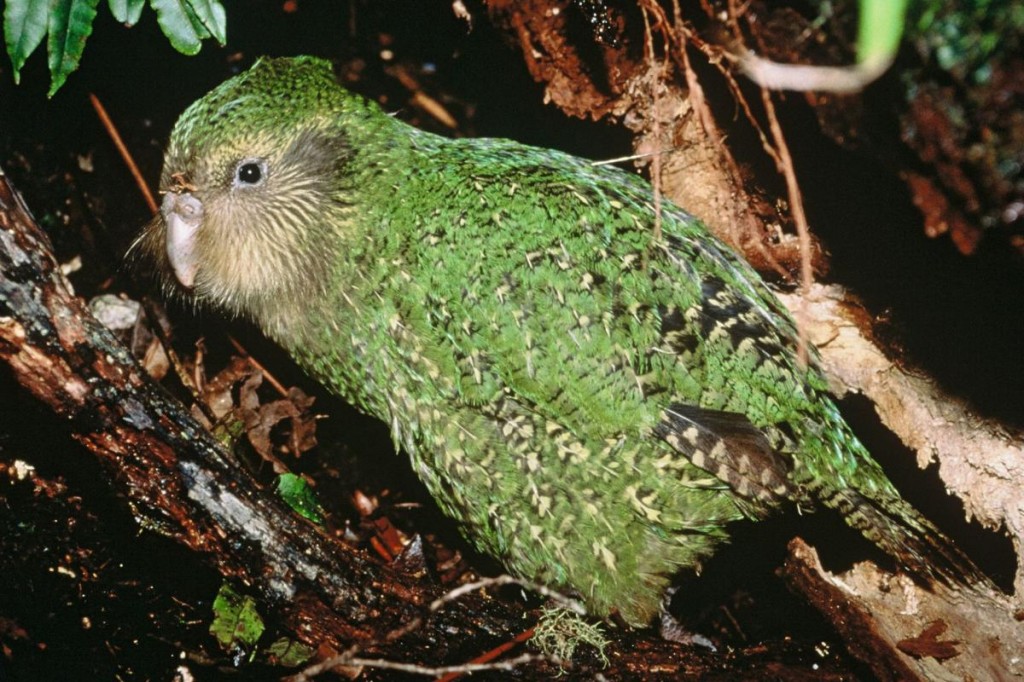
Perhaps due to their slow metabolism, kakapos are long-lived compared to other birds. A large number of birds are over 30 years old and the oldest is thought to be over 100! Because they live so long, they go through adolescent period of at least several years before breeding.
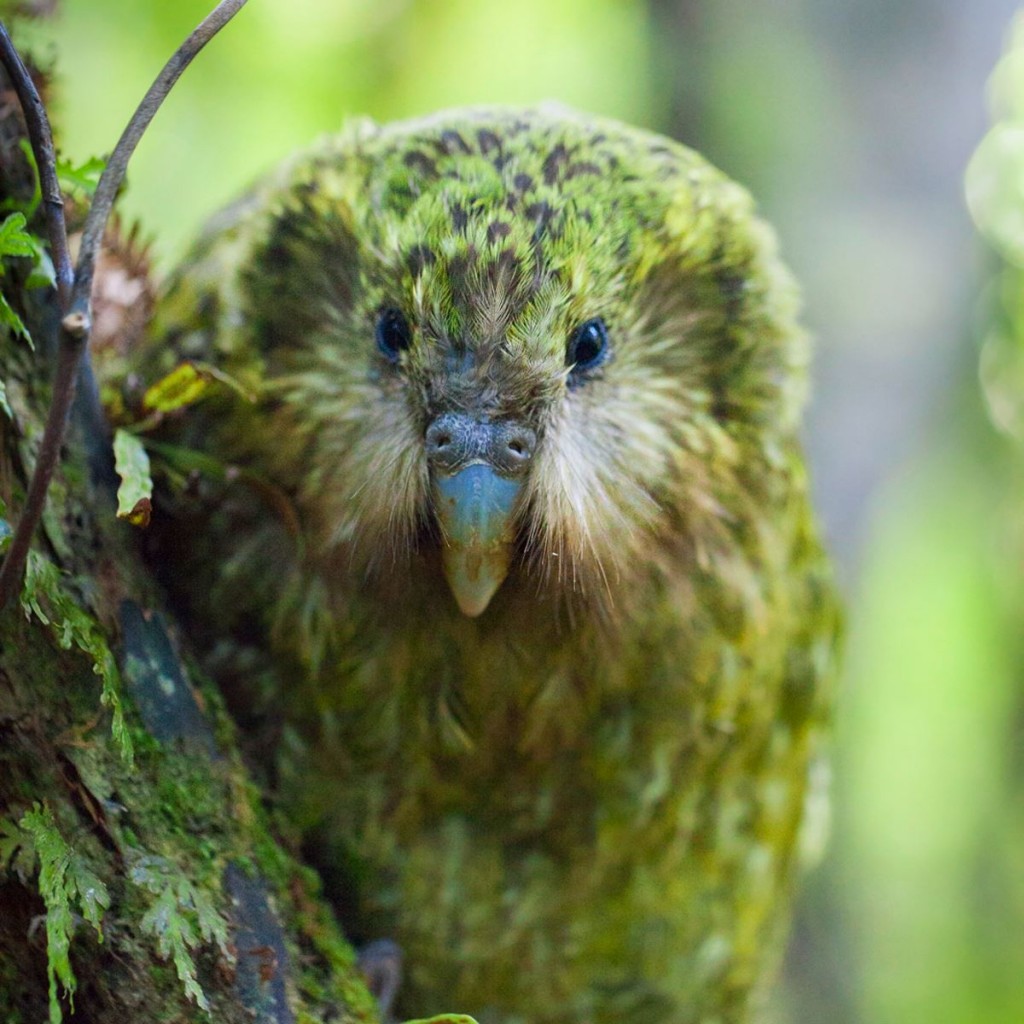
Kakapos do everything slowly, which includes mating. To attract females, the male will inflate to the size of a basketball and make loud, low-frequency tones that can be heard up to three miles away. The booming sound is similar to that of a foghorn. The male will do this up to eight hours every night for three months. Females are only interested in breeding every two to four years.
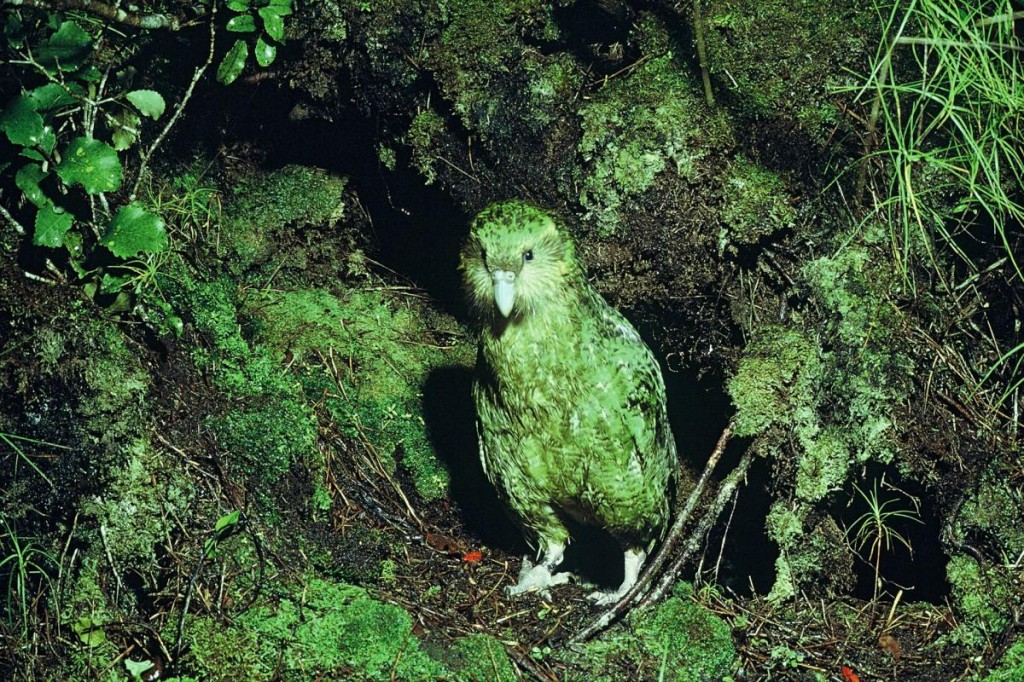
The kakapo\’s feathers help it blend in with the mossy forest floor.
During pre-Polynesian times, the kakapo was New Zealand’s third most common bird and thrived all throughout the three main islands. However, when the first settlers arrived, they brought cats, weasels and rats, which devastated the slow, flightless birds. By the 1970s, the known population consisted of only 18 kakapos–all male. Without a female, the species seemed doomed to extinction.
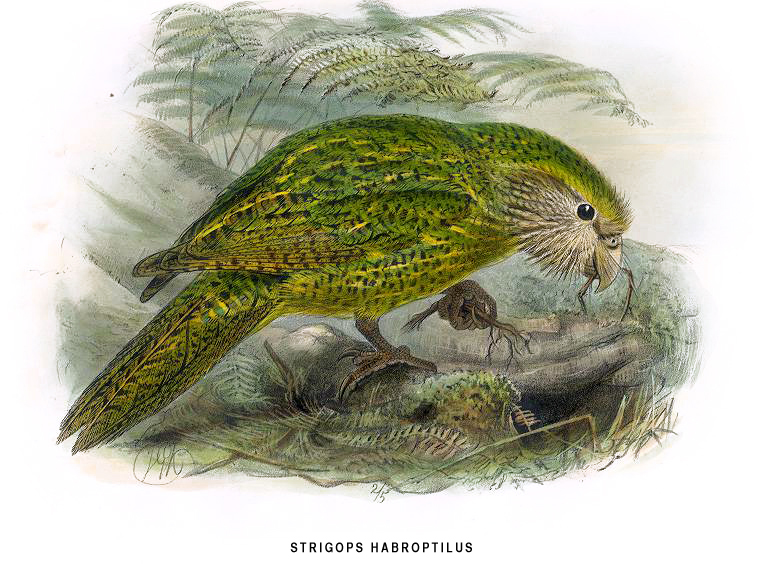
In 1977, a small breeding population was discovered on Stewart Island, New Zealand’s third largest island. Since then, the New Zealand Department of Conservation has worked to save the kakapo through an extensive recovery program. The remaining birds were moved to four predator-free islands and the population has grown to 126 individuals, including 78 breeding females. The species is still considered critically-endangered.
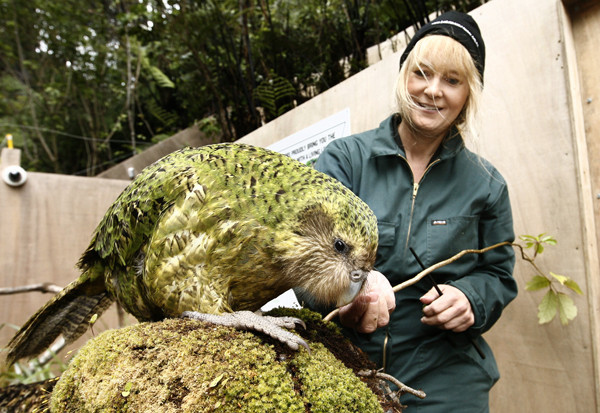
The kakapo will be featured in the upcoming NATURE episode Animal Misfits premiering Wednesday, October 15th, 2014 at 8/7c on PBS. Check your local listings.
References:
Powlesland, R.G.; Merton, D.V.; Cockrem, J.F. 2006. A parrot apart: the natural history of the kakapo (Strigops habroptilus), and the context of its conservation management. Notornis 53 (1): 3 – 26
Strigops habroptila. IUCN Redlist. Accessed August 21, 2014 at http://www.iucnredlist.org/details/22685245/0
Kakapo Recovery Program website. Accessed August 21, 2014 at http://kakaporecovery.org.nz/
Erik Hirschfeld (2007). Rare Birds Yearbook 2008. England: MagDig Media Lmtd. p. 151. ISBN 978-0-9552607-3-5.
Photo credits:
1. ©Shane McInnes
2. New Zealand Department of Conservation via New Zealand Birds Online
3. Sirocco Kakapo Facebook Page
4. New Zealand Department of Conservation via New Zealand Birds Online
6. New Zealand Department of Conservation via Reddit.com
